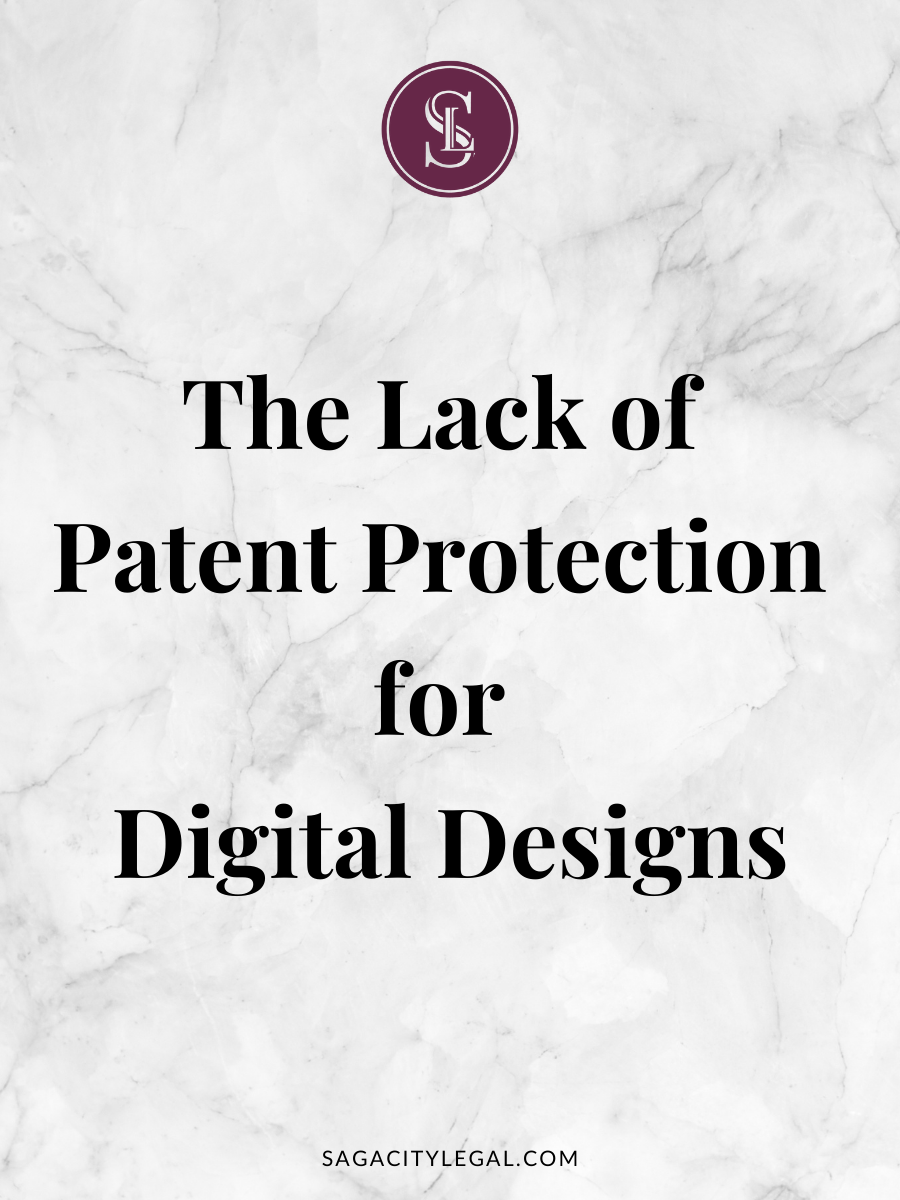PATENTING YOUR DIGITAL DESIGN
With the recent rise in popularity of digital design creation such as NFTs, the need for patent protection becomes more urgent. Currently, there is a gap in the law that leaves digital designs vulnerable. This could have some serious consequences down the road if it isn’t remedied soon!
The United States Patent Office has been recognizing the design of computer generated icons for years as eligible to receive protection under patent law IF they are embodied within a display panel.
However, many new and emerging technologies untether computer generated images from discrete, tangible display panels. In the US and many other countries, these are not currently eligible for design patent protection at all.
WHAT CAN YOU DO TO PROTECT YOUR DIGITAL DESIGN?
KEEP READING as I explain what this means for you AND what you can do TODAY to protect your digital designs.
PATENT BASICS
Let’s start with some basics.
When you invent something new and revolutionary, it can be thrilling to know that your invention is protected by law. A patent provides legal protection for an agreed-upon time period in exchange for PUBLIC access to details on how they work!
A design patent is a way for designers to protect their unique, ornamental designs. This includes both surface decoration and configurations of goods.
Patents provide huge benefits to you and your business. Not only do they help increase the value of a company, but patents are also an important tool in building competitive advantage.
Sounds great – doesn’t it. So what’s the issue?
THE ISSUE WITH PATENTING YOUR DIGITAL DESIGN
For over 25 years, the US Patent Office has allowed for patents on designs that are incorporated into physical displays.
However, computer-generated image designs not displayed on a screen are not eligible for design patent protection. This includes new and emerging technologies such as NFTs that result in images being untethered from a specific physical device.
More and more patent offices are adapting to the changing world of technology. Patent Offices in Europe, Singapore, Japan, and China now allow for patents on computer-generated image designs without being interactive or integral part of a physical display.
The USPTO is currently studying its options, with input from experts across America.
If you were to give input to the USPTO, what would you say? Drop a comment to this video and let me know, I’ll respond to every comment.
HOW TO PROTECT YOUR DIGITAL DESIGN
With the gaps in the law, are you wondering what you can do TODAY to protect your digital designs?
Having an intellectual property strategy that includes patent, trademark and copyright protection is the best way to ensure your designs stay out of competitors’ hands.
For example, icons used in branding your applications, platforms, or other digital products can be trademarked.
Copyright law provides protection for computer software code and automatically exists upon creation.
As I’ve mentioned, you can also protect the look and feel of your graphical user interface with design patents if they are incorporated into a physical display.
You can be successful in this new world of the digital economy. Just do it right – so you don’t have to do it over.
HOW TO LEARN MORE
Want to learn more about being a successful inventor? Start today by reading my blog post: “DON’T MISS THE STARTING LINE WHEN PROTECTING YOUR PHENOMENAL INVENTIONS”
And if you found value in this blog post today, let me know in the comments below. And if you thought of someone who would benefit from hearing this blog post, I would be so grateful if you would share it with them.


leave a comment on this post.